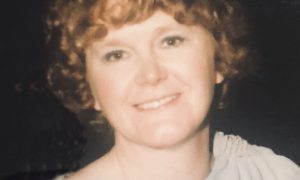WESTFIELD—As we reach the end of the year the temperatures drop and the heating sources get turned up, but with that can come the risk of carbon monoxide exposure.
During this time of year, when heating systems are used more regularly, the potential to be exposed to carbon monoxide in homes can increase, meaning increased risks for residents, since increased carbon monoxide exposure can come with medical risks up to and including death. The Westfield Fire Department wants residents to be aware of this “silent killer” as heating sources using different fuels are being used more frequently this time of year.
According to Westfield Fire Deputy Chief Eric Bishop, there have been a total of 23 carbon monoxide incidents in the city this year since Jan. 1, 2017.
These and incidents like them can come from a variety of sources, such as wood-burning stoves, fuel-based furnaces, portable or space heaters, generators, as well as vehicles being left to run inside attached garages of homes.
Steps to help prevent this include, from the Massachusetts Department of Fire Services’ online document “Carbon Monoxide Safety,” inspections of appliances should happen yearly from qualified service technicians, you should check vent pipes, flues and chimneys in the home for leaks or blockages, not to use a gas oven to heat your home, to never use charcoal grills indoors and to not use gasoline-powered engines indoors or near open windows or doors, among other items.
Carbon monoxide can be due to the combustion and incomplete burning of the fuels, such as oil, gasoline or wood, used in these heating sources.
Exposure to carbon monoxide, according to Bishop, which occurs through breathing, can have a myriad of symptoms.
“In low concentrations, it can be confused with flu-like symptoms,” Bishop said, such as fatigue, nausea dizziness or headaches.
Other symptoms of exposure may include light-headedness, confusion, fainting. And if exposure is high enough, it can lead to death.
According to Bishop, carbon monoxide is odorless, colorless, tasteless and thus it being known as a “silent killer.”
In order to prevent these sorts of issues from occurring, carbon monoxide detectors should be in homes. And if fossil fuels are being used to heat homes, then Bishop said that carbon monoxide detectors are needed at each hospitable level of the home, as well as within 10 feet of bedroom doors. According to the Massachusetts Department of Fire Services’ “Carbon Monoxide Safety,” unfinished basements and attics do not need the detectors.
Bishop also said to be sure that the detectors being used are less than 10 years old, in order to maintain efficiency of the potentially life-saving device.
“If the alarm goes off you should seek fresh air and call the fire department,” Bishop said.
“We have carbon monoxide meters to checks homes. We want to make sure you’re safe,” he said.







